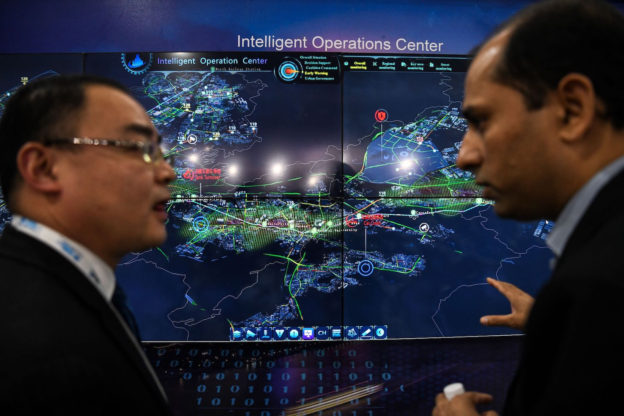After last summer’s clashes with China, New Delhi may finally be ready to leave ambiguity behind—and side with the West.
In early May, India announced that it would allow mobile carriers to carry out 5G trials with Ericsson, Nokia, Samsung, and C-DOT equipment. The statement left off Huawei and other Chinese equipment manufacturers. They haven’t been banned from supplying equipment outright, but news reports following the May notice have hinted that, by June, new procurement rules will officially block mobile carriers from using Chinese equipment.
The deployment of 5G, the next generation of wireless technology, has become a priority around the world. India, of course, does not wish to be left behind in the race to build the infrastructure that could have an economic impact exceeding $1 trillion by 2035 in India alone, according to government estimates. The 5G-enabled tech could also help India leapfrog traditional barriers to development by supporting ambitious infrastructure and e-governance initiatives.
But there has always been the question of who should provide the equipment. And since the beginning of that debate—specifically whether to allow Chinese tech companies to build these networks against U.S. wishes—India has maintained conspicuous ambiguity.
In December 2019, Indian Communications Minister Ravi Shankar Prasad announced that anyone—including Huawei—could participate in India’s 5G trials. The country’s Telecommunications Department even received proposals from Huawei and ZTE for their participation. Huawei reportedly even offered to sign a “no backdoor” agreement with the Indian government that would have given New Delhi the power to ban Huawei from operating in the country if there were serious evidence of security breach on its part.
Subsequently, however, New Delhi established two committees to review the Huawei question more closely. The first was convened under India’s principal scientific advisor, while the second was made up of members from the country’s Home Affairs Ministry and Intelligence Bureau. Even the composition of these committees shows a clear evolution in the Indian government’s approach to the 5G question. For instance, the first committee had significant representation from India’s Science and Technology and External Affairs ministries, while the second committee had a greater focus on security voices.
Security has undoubtedly become one of the most important factors in choosing suppliers for 5G gear, given the possibility that the network equipment could be used to spy. The United States and Australia are particularly concerned about the risks associated with Huawei, citing its opaque ownership structure, proximity to the Chinese Communist Party, and provisions of China’s espionage and intelligence laws that require organizations and citizens to “support, assist, and cooperate with the state intelligence work.”
Unease with Huawei in particular dovetailed into larger geopolitical and strategic concerns associated with the ongoing technological cold war between the United States and China. Both countries—through policies, statements, and actions—have worked to compel third parties to either choose Huawei and risk ties with the United States or ban Huawei and invite repercussions from China.
The effect is the potential splintering of global cyberspace and technology into two distinct spheres of influence. Policy experts even predict a “digital iron curtain” falling across global technology and governance as some countries opt to go with the United States and others—particularly low- and middle-income countries—pick more cost-effective Chinese options.





